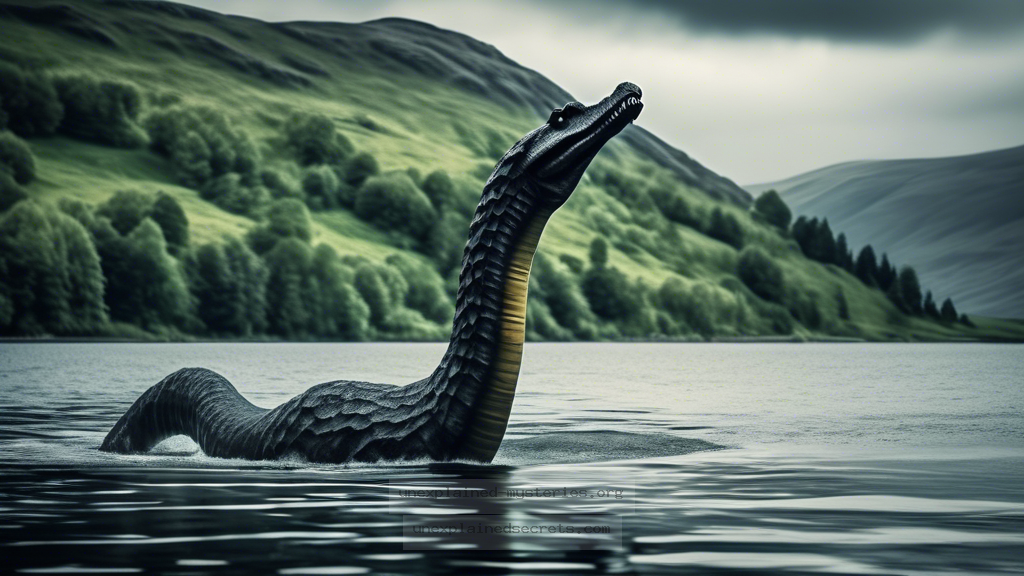What Lies Beneath: Can Sonar Technology Truly Capture Evidence of the Loch Ness Monster?
What Lies Beneath: Can Sonar Technology Truly Capture Evidence of the Loch Ness Monster?
The Loch Ness Monster, or Nessie as she is affectionately known, has captivated the imagination of many for decades. This enigmatic creature is said to inhabit Loch Ness, a large freshwater lake in the Scottish Highlands. While numerous sightings and anecdotal evidence have emerged over the years, the question remains: can modern sonar technology provide definitive proof of her existence? In this blog post, we will explore the intriguing world of sonar technology and its implications for uncovering the mysteries of Loch Ness.
Historical Context of the Loch Ness Monster
The legend of Nessie dates back to ancient times, with the first recorded sighting occurring in the 6th century. A biography of Saint Columba mentions a creature in the loch that attacked a man. However, the modern fascination with the Loch Ness Monster began in the 1930s when a photograph known as the “Surgeon’s Photograp” was published, allegedly showing a large creature in the water. Subsequent sightings and hoaxes fueled public interest, leading to various investigations, including sonar explorations.
Understanding Sonar Technology
Sonar, an acronym for Sound Navigation and Ranging, uses sound propagation to navigate, communicate, or detect objects underwater. This technology operates by emitting sound waves and analyzing the echoes that return. There are two primary types of sonar:
- Active sonar: Sends out sound waves and listens for their echoes.
- Passive sonar: Listens for sounds made by objects in the water.
In the context of Loch Ness, active sonar has been utilized to map the lake’s depths and search for anomalies that could indicate the presence of large creatures. The lake is approximately 23 miles long, 1 mile wide, and reaches depths of over 800 feet, making it a challenging environment for sonar technology.
Notable Sonar Expeditions at Loch Ness
Several notable expeditions have employed sonar technology to search for Nessie. One of the most famous occurred in 1987, known as the “Operation Deepscan.” This operation involved a fleet of boats equipped with sonar scanning the loch’s depths. The results revealed several large, unexplained objects, but no conclusive evidence of the Loch Ness Monster was found. Further expeditions, including those in 2003 and 2018, have continued to yield similar results, with sonar detecting large shapes but failing to provide definitive proof of Nessie’s existence.
Core Concepts: What Sonar Reveals
Sonar technology has provided essential insights into the underwater environment of Loch Ness. Researchers have discovered various geological formations, sunken objects, and even schools of fish. However, the sonar also detected large, unidentified shapes that have sparked speculation about their nature.
Key Point: Sonar can identify shapes and structures but cannot provide definitive identification without further investigation.
Some theories propose that these unidentified shapes could be large fish or even underwater currents creating unusual formations. Others hypothesize that they may be remnants of ancient trees or submerged debris from the area’s long history.
Practical Implications of Sonar Evidence
The implications of sonar findings are significant for both cryptozoologists and the scientific community. The presence of unidentified shapes raises questions about the biodiversity of Loch Ness and the potential for undiscovered species. This could lead to further studies on the ecological health of the loch and its ability to support large aquatic life. Additionally, sonar technology allows for non-invasive exploration, minimizing disturbances to the environment.
Alternative Perspectives: Skepticism and Belief
While many enthusiasts believe Nessie is a real creature, skeptics argue that the sonar findings can be explained by more mundane phenomena. Some experts suggest that the unidentified shapes could be large fish, such as sturgeons or catfish, which can grow to impressive sizes. Others attribute the sightings to misinterpretations of natural phenomena or artifacts caused by wind and waves on the loch.
Warning: It’s crucial to approach the Loch Ness Monster mystery with a critical mindset, as many claims may be exaggerated or fabricated.
Common Misconceptions About Sonar and Nessie
There are several misconceptions surrounding sonar technology and its application in the hunt for Nessie. One common belief is that sonar can definitively identify large creatures. In reality, while sonar can detect anomalies, it cannot provide species identification without visual confirmation. Additionally, the depth and murkiness of Loch Ness can hinder sonar effectiveness, making it challenging to obtain clear data.
Best Practices for Investigating the Loch Ness Mystery
For those interested in investigating the Loch Ness Monster, it is essential to adopt best practices to ensure responsible research. This includes:
- Using reputable technology and methodologies to gather data.
- Collaborating with marine biologists and experts in sonar technology.
- Respecting the natural environment and its ecosystems during investigations.
Moreover, documenting findings with proper scientific rigor can help in distinguishing between credible evidence and sensational claims. Engaging with local communities and respecting their folklore can also enrich the research experience.
Future Developments in Loch Ness Research
As technology advances, the potential for uncovering the mystery of Loch Ness continues to grow. Innovations in sonar technology, such as multi-beam sonar and autonomous underwater vehicles (AUVs), promise more detailed exploration of the loch’s depths. Additionally, genetic sampling of water could provide insights into the presence of previously unknown species.
Ongoing research efforts are increasingly interdisciplinary, combining marine biology, cryptozoology, and environmental science. This holistic approach may lead to breakthroughs in understanding the ecological dynamics of Loch Ness and its potential inhabitants.
Conclusion: The Mystery Endures
While sonar technology has proven invaluable in the quest to understand the depths of Loch Ness, it has yet to provide conclusive evidence of the Loch Ness Monster. The unidentified shapes detected by sonar continue to spark debates and fuel legends. As research methods evolve and technology improves, the mystery of Nessie remains open, drawing enthusiasts and skeptics alike into the enchanting depths of the Scottish loch. Whether Nessie is merely a figment of folklore or a real creature lurking beneath the surface, the allure of Loch Ness persists, reminding us of the mysteries that still abound in our world.
Other Articles
Recent Posts
- What Happened to Flight MH370? The Conspiracy Theories That Still Haunt Us
- What Secrets Lurk Within the Walls of the Infamous Trans-Allegheny Lunatic Asylum?
- What Evidence Supports the Existence of Bigfoot in the Pacific Northwest?
- What Happened to the Indus Valley Civilization? Unraveling the Mysteries of Ancient Urban Life
- Can Telepathy Be Scientifically Proven Through Laboratory Evidence?







